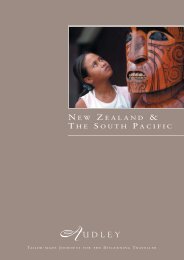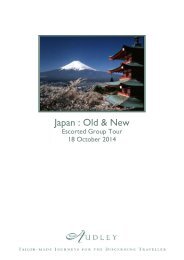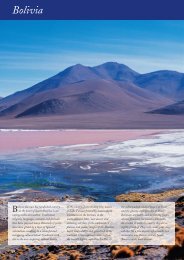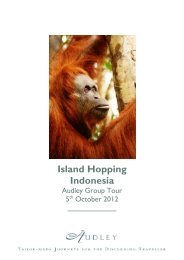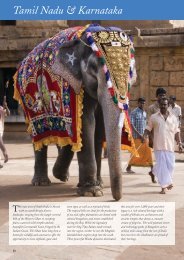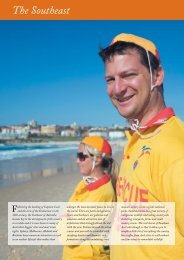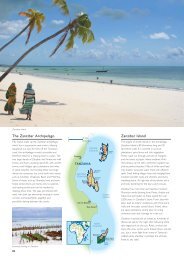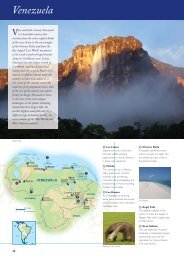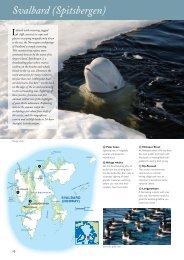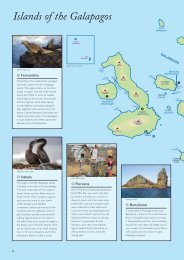Download - Audley Travel
Download - Audley Travel
Download - Audley Travel
You also want an ePaper? Increase the reach of your titles
YUMPU automatically turns print PDFs into web optimized ePapers that Google loves.
Daibutsu Budda, Kamakura<br />
Nikko & Kamakura<br />
Only a couple of hours north of the capital, the<br />
small mountain town of Nikko feels like another<br />
world. Here, beneath the cool cedars, stands the<br />
magnificent Toshogu Shrine, mausoleum to the<br />
first and greatest Tokugawa Shogun on whom<br />
James Clavell based his famous novel. The superb<br />
carvings of the shrine, including the original ‘see<br />
no evil, hear no evil, speak no evil’ monkey<br />
carvings, are complemented by the beautiful<br />
mountain setting. After a thorough exploration of<br />
the shrine precinct we recommend heading up<br />
the hairpin road to enjoy the fine scenery of Lake<br />
Chuzenji and the Kegon waterfall. For Tokyo-ites<br />
the tranquil seaside town of Kamakura, which lies<br />
just an hour south of the city, is a favourite<br />
getaway from the hustle and bustle of daily life.<br />
Dotted with secluded shrines and temples –<br />
remnants of the town’s brief halcyon days as<br />
Lake Chuzenji, Nikko<br />
10<br />
Lake Ashi and Mount Fuji, Hakone<br />
capital of the nation – Kamakura is also home to<br />
the Daibutsu Buddha, which, carved out of<br />
bronze, stands over 13 metres tall in the grounds<br />
of Kotoku-in Temple.<br />
Mount Fuji & the Hakone<br />
National Park<br />
Head westwards from Tokyo and the land<br />
immediately becomes more mountainous, offering<br />
beautiful alpine views and some fantastic locations<br />
for hot spring bathing. The Hakone National Park,<br />
home to volcanic scenery, picturesque Lake Ashi<br />
and an excellent open-air sculpture park, is<br />
perhaps the finest of these. Towering above the<br />
whole is Japan’s foremost natural sight, the<br />
majestic Mount Fuji, whose iconic snow-capped<br />
peak has been portrayed in countless works of<br />
Japanese art and literature. In Japan, it is said that<br />
a wise man climbs Fuji-san once in his life, but<br />
only a fool climbs it twice. Sadly Fuji is notoriously<br />
shy and is often cloud-bound, leading us to<br />
believe that the wisest of all men stay at a safe<br />
distance relaxing in the Hakone National Park.<br />
With luck you will be able to catch a glimpse of<br />
Fuji’s snow-capped summit from the comfort of a<br />
hot spring bath. It is possible to climb Mount Fuji<br />
for a short window during July and August.<br />
HAKONE GINYU, HAKONE<br />
This Relais and Chateaux property is one of the<br />
finest examples of the traditional ryokan inn (see<br />
page 16) anywhere in Japan, with hints of Balinese<br />
design and an emphasis on subtle and discreet<br />
elegance. Luxurious relaxation is important here<br />
and you leave feeling pampered in every way.<br />
The ryokan is noted as a spa resort and all the<br />
baths are fed by the mineral-rich thermal water<br />
from the Mount Fuji region. Hakone Ginyu is one<br />
of our favourite hot spring inns in Japan.<br />
Hakone Ginyu



